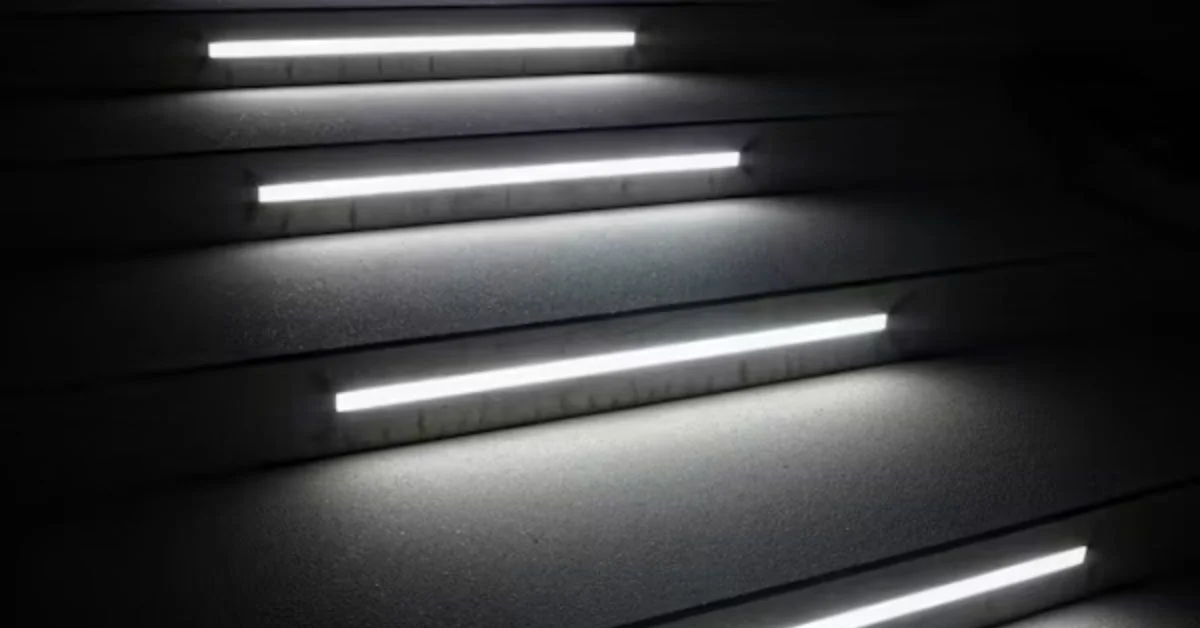In an era where both vehicles and smart homes rely heavily on integrated technology, certain terms emerge in manuals, dashboards, or device settings that aren’t always self-explanatory. One such term—CH lights—is cropping up more often in user manuals, car forums, home security apps, and even building codes. The abbreviation might look simple, but depending on the context, CH lights can refer to different types of lighting systems tied to control, comfort, or hazard functions.
So, what exactly are CH lights? Do they mean the same thing in a car as in your home’s HVAC panel? Why are they showing up more frequently in 2025 smart infrastructure? And more importantly—should you be concerned when they turn on?
This article offers a comprehensive, up-to-date guide to CH lights, covering their definitions, functions, use cases, and safety relevance. Whether you’re driving a new electric vehicle, installing smart home systems, or decoding unfamiliar light signals, understanding CH lights helps you stay informed, safe, and in control.
What Are CH Lights?
The term CH lights typically refers to “Comfort Heater” lights or “Courtesy Headlights”, depending on the context in which they appear:
- In Vehicles: CH lights often mean Courtesy Headlights, a feature that keeps your headlights on temporarily after exiting the car to light your path.
- In Homes or HVAC Systems: CH lights may refer to Comfort Heating indicators—signaling that a zoned heating or radiant floor system is active.
- In Industrial/Building Automation: CH can sometimes stand for “Channel” lights—indicating active control channels in programmable logic controllers (PLCs).
The key to decoding CH lights is context. In 2025, as vehicles and homes become increasingly integrated with smart lighting, heating, and diagnostics systems, understanding these lights is no longer just for technicians—it’s essential for everyday users.
CH Lights in Vehicles: Courtesy Headlights and Safety
What They Are
In cars, CH lights typically refer to Courtesy Headlights—an automatic lighting feature that keeps your headlights or side lamps on after the engine is turned off, usually for 30 to 90 seconds. This allows drivers and passengers to see their path as they exit or approach the vehicle, particularly in dark environments.
How They Work
This feature is triggered by unlocking the car or turning off the ignition. A timer delay is set in the vehicle’s Body Control Module (BCM), and the lights turn off automatically without draining the battery significantly.
Why They Matter
- Improved Nighttime Safety: Illuminates dark driveways, parking lots, or home entrances.
- Anti-theft deterrence: Briefly lighting the area around your car may discourage opportunistic threats.
- Convenience: A comfort feature that’s subtle but widely appreciated, especially in luxury or electric vehicles.
Trends in 2025
More manufacturers are customizing CH lighting durations via infotainment systems or companion apps. Some cars offer adaptive CH lights, which adjust the intensity and angle based on ambient lighting and motion detection.
CH Lights in Home HVAC and Smart Heating
What They Are
In the realm of home heating, especially in smart thermostats and radiant floor heating systems, CH light typically stands for “Comfort Heating”.
When the CH light is on, it usually means:
- The heating system is actively delivering warm air or radiant heat.
- The system is in “comfort mode” as opposed to eco/sleep schedules.
Systems Where You’ll See It:
- Smart thermostats (e.g., those controlling underfloor heating)
- Zoned HVAC units
- Hybrid heating systems (e.g., heat pump + gas backup)
Why It’s Important
- Visual confirmation that your home’s heating is functioning as programmed.
- A diagnostic clue: If your home feels cold but the CH light isn’t on, your system might not be responding to thermostat input.
- Energy awareness: In 2025, energy-efficient homes often toggle between comfort and eco modes. The CH light helps homeowners track active energy use.
Example:
If you set your smart thermostat to 22°C during the day and 17°C at night, the CH light activates during the day to signal that comfort heating is in progress.
CH Lights in Building Automation and Industrial Controls
In commercial buildings and industrial environments, CH lights often refer to Channel Indicators:
CH as Channel
- These lights appear on control panels or PLCs (Programmable Logic Controllers).
- Each CH light corresponds to a control channel—such as lighting zones, HVAC dampers, or security access.
- CH1, CH2, CH3… are common labels on wiring diagrams and diagnostic interfaces.
Why They Matter
- Provide real-time feedback about which zones or circuits are active.
- Crucial for troubleshooting, commissioning, and verifying system logic.
- Increasingly integrated into building energy management systems (BEMS).
For instance, a hotel might have CH lights labeled by floor or zone. A glowing CH2 light might indicate that heating is active on the second floor.
How CH Lights Improve Everyday Life
CH lights are more than just technical indicators—they are design features aimed at comfort, safety, efficiency, and transparency. In 2025, as environments become more automated and energy-conscious, these small indicators provide valuable user-facing feedback.
1. Smart Feedback Loops
Rather than logging into a mobile app, homeowners and drivers can use visual cues (CH lights) to know their system status instantly.
2. Preventive Maintenance
In HVAC systems, CH lights that fail to engage when heating is expected might signal a faulty thermostat, actuator, or sensor. In vehicles, CH lights that stay on longer than expected may indicate a delay in the BCM or sensor fault.
3. Security Enhancements
In smart cars and homes, CH lights work in tandem with motion sensors, geofencing, and automation routines to offer lighting only when needed—balancing security and energy efficiency.
Common Misconceptions About CH Lights
“Is a CH light a warning?”
Not always. Unlike check engine lights or red dashboard alerts, CH lights are usually informational or status-based. But they can serve as indirect diagnostics when something isn’t functioning correctly.
“Does the CH light mean the heating system is broken?”
Only if it’s off when heating is expected, or on when heating should be idle. It’s a good first check before calling a technician.
“Are CH lights mandatory?”
In some new electric vehicles and smart home systems, CH indicators are built-in for transparency, but they’re not universally required by regulation.
How to Manage or Adjust CH Light Settings
For Vehicles:
- Access your infotainment system or mobile app (e.g., MyMazda, FordPass).
- Look for “Lighting Settings” or “Exit Lighting.”
- Customize:
- Duration (30–120 seconds)
- Auto-on triggers (unlock, door open, engine off)
For HVAC/Home:
- Smart thermostats like Nest, Ecobee, or Panasonic allow you to set comfort schedules.
- CH lights are tied to those comfort periods.
- Some apps allow CH light overrides if heating is not needed despite the preset.
The Role of CH Lights in Sustainability
In 2025, lighting and heating account for significant residential and commercial energy use. CH lights, by giving visual feedback, help users:
- Understand energy use in real time
- Reduce unnecessary heating cycles
- Enhance zone-based heating, thereby lowering carbon footprints
- Use data logs from CH activation to refine usage schedules
With many countries targeting net-zero emissions, small awareness tools like CH lights help bridge the gap between automation and user responsibility.
Conclusion
The humble CH light may seem like a niche or insignificant part of your car’s dashboard or home thermostat panel, but it reflects an evolution in how modern technology communicates with humans. In 2025, as both our vehicles and our homes grow smarter, more efficient, and more responsive, CH lights serve as small but vital indicators of comfort, control, and safety.
Whether signaling that your car’s headlights are staying on briefly for your convenience or confirming that your radiant heating system is warming the bathroom floor on a cold morning, CH lights are your systems’ way of saying: “I’m working for you.”
Understanding what CH lights do—and when to pay attention—can make your daily interactions with technology more intuitive, efficient, and satisfying.
FAQs
1. What does CH light mean in a car?
In most vehicles, CH stands for “Courtesy Headlight,” which stays on briefly after ignition is off to light your path.
2. Should I be worried if my CH light is on at home?
Not usually. It typically indicates active comfort heating. If the house feels cold and CH light is off, check your thermostat.
3. Can I turn off CH lights in my car?
Yes, most vehicles allow you to adjust or disable CH lighting duration through your infotainment system or vehicle app.
4. Do CH lights use a lot of electricity?
No, CH lights are energy-efficient. In vehicles, they are designed to shut off automatically to prevent battery drain.
5. Is CH light the same in all devices?
No. CH light meaning depends on context: it could refer to Courtesy Headlight, Comfort Heating, or Channel Indicator in control systems.
For more information, click here.









